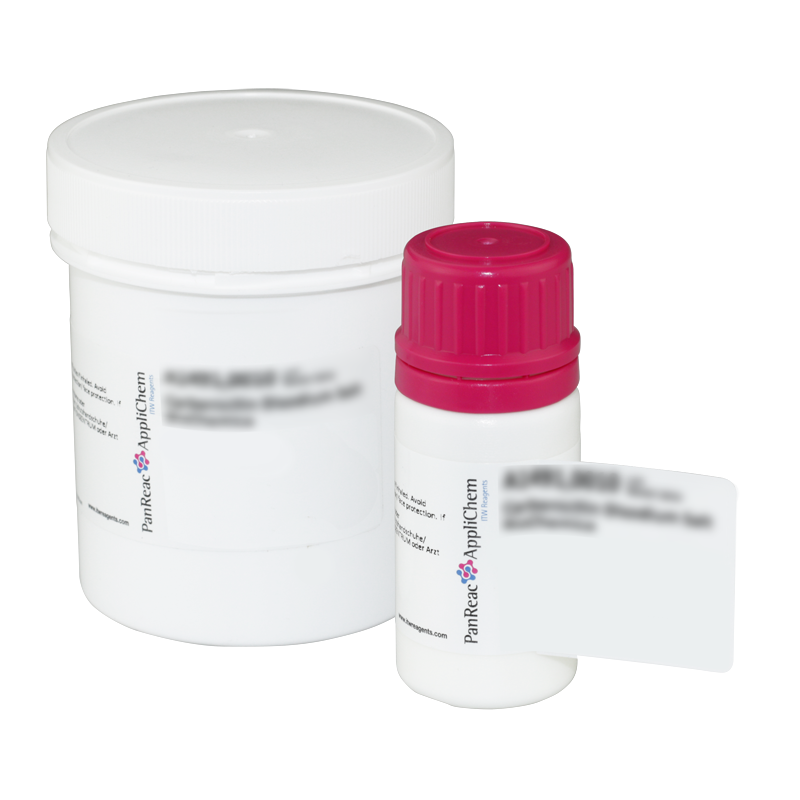Packs sizes (2)
| code | packaging size | price per unit | box price per unit | |
|---|---|---|---|---|
| Code & packaging | Price per piece | |||

|
code
A2240,0100
|
packaging size
100 mg
|
price per unit
single
240,60€
|
box price per unit
|

|
code
A2240,0500
|
packaging size
500 mg
|
price per unit
single
782,50€
|
box price per unit
|
Technical data
- Physical Description:
- Solid
- Product Code:
- A2240
- Product Name:
- XTT Sodium Salt BioChemica
- Specifications:
- λmax.: 283 - 287 nm
E 1 %/1 cm, 285 nm: 14800 - 16800
Water: max. 15 %
- Hazard pictograms
-
- UN:
- 3224
- Class/PG:
- 4.1
- ADR:
- 4.1
- IMDG:
- 4.1
- IATA:
- 4.1
- WGK:
- 1
- Storage:
- 2 - 8°C
- Signal Word:
- Danger
- GHS Symbols:
- GHS02
- H Phrases:
- H228
H242
- P Phrases:
- P210
P241
P280
P370+P378
P403
P501
- CS:
- 29339980





